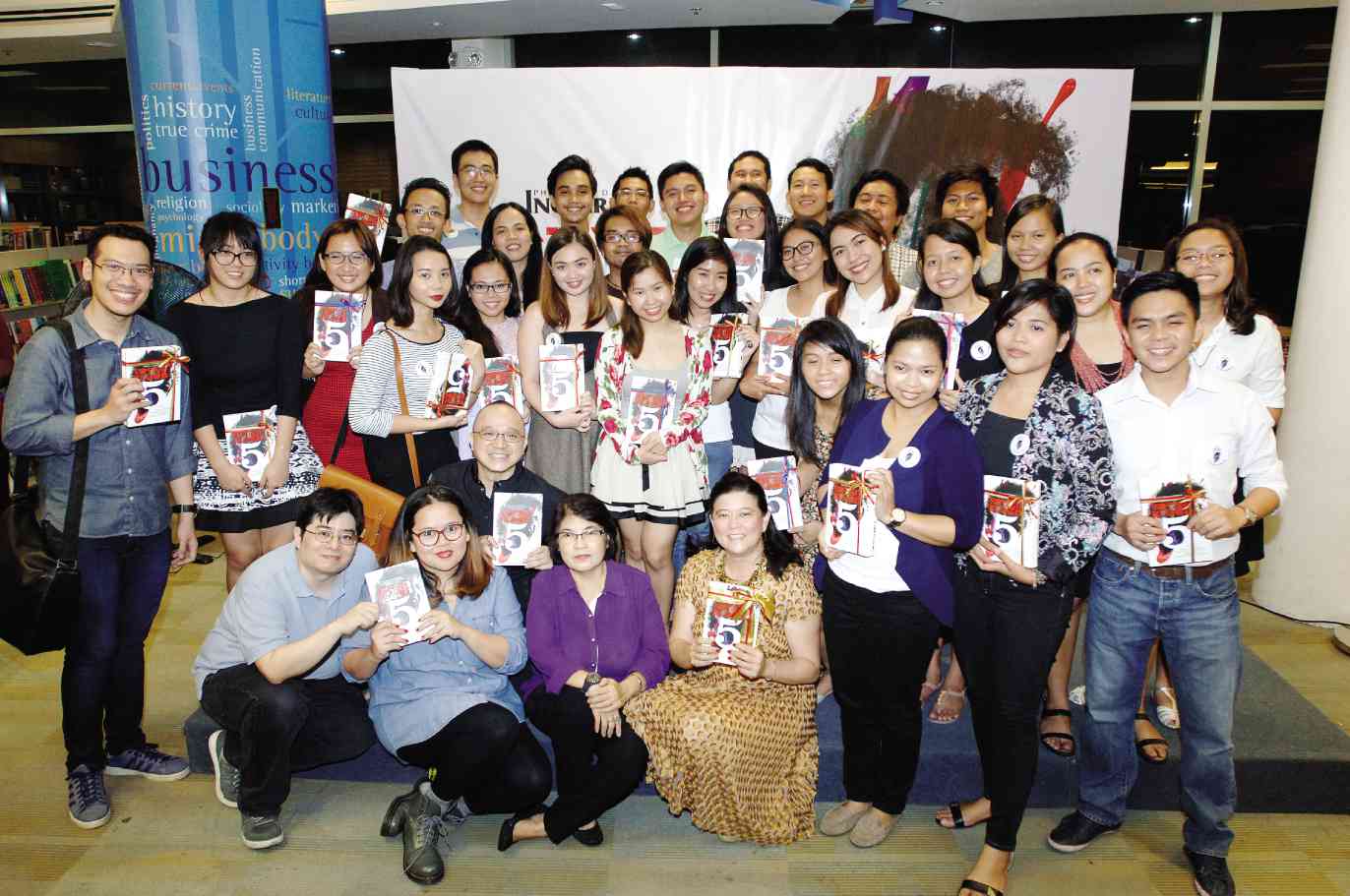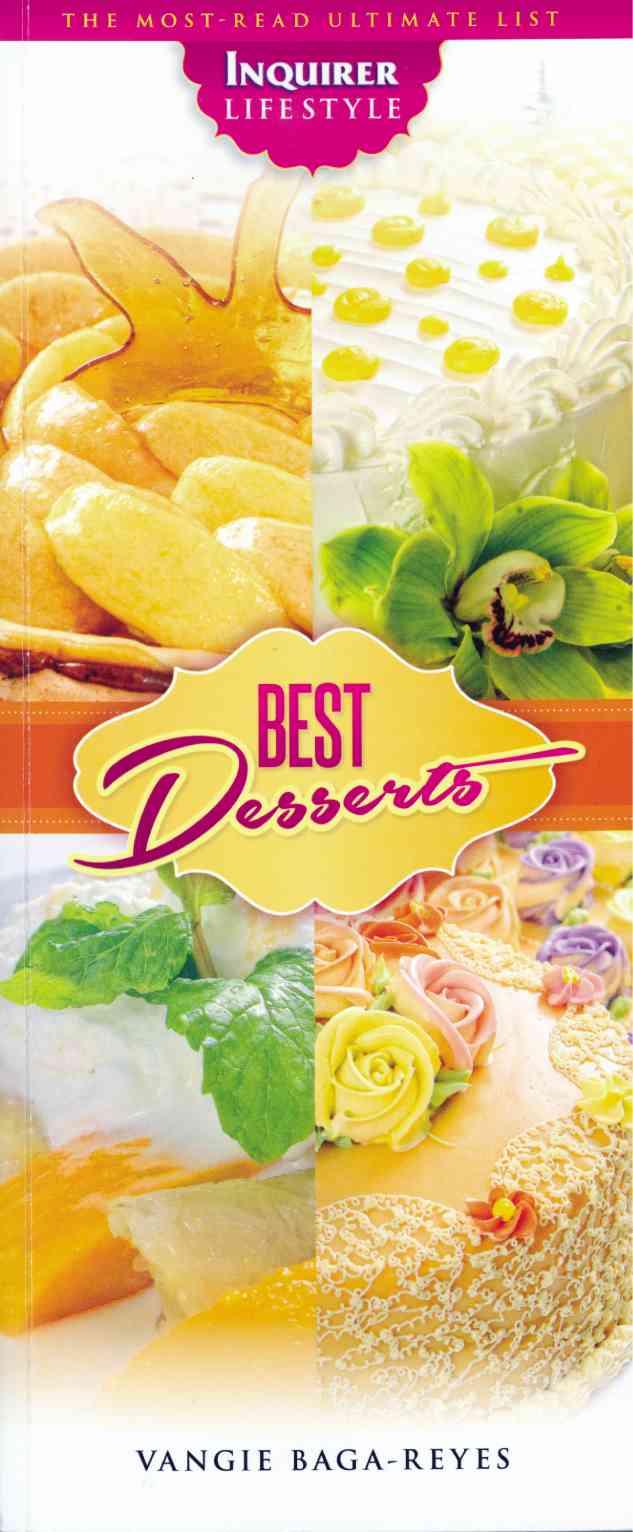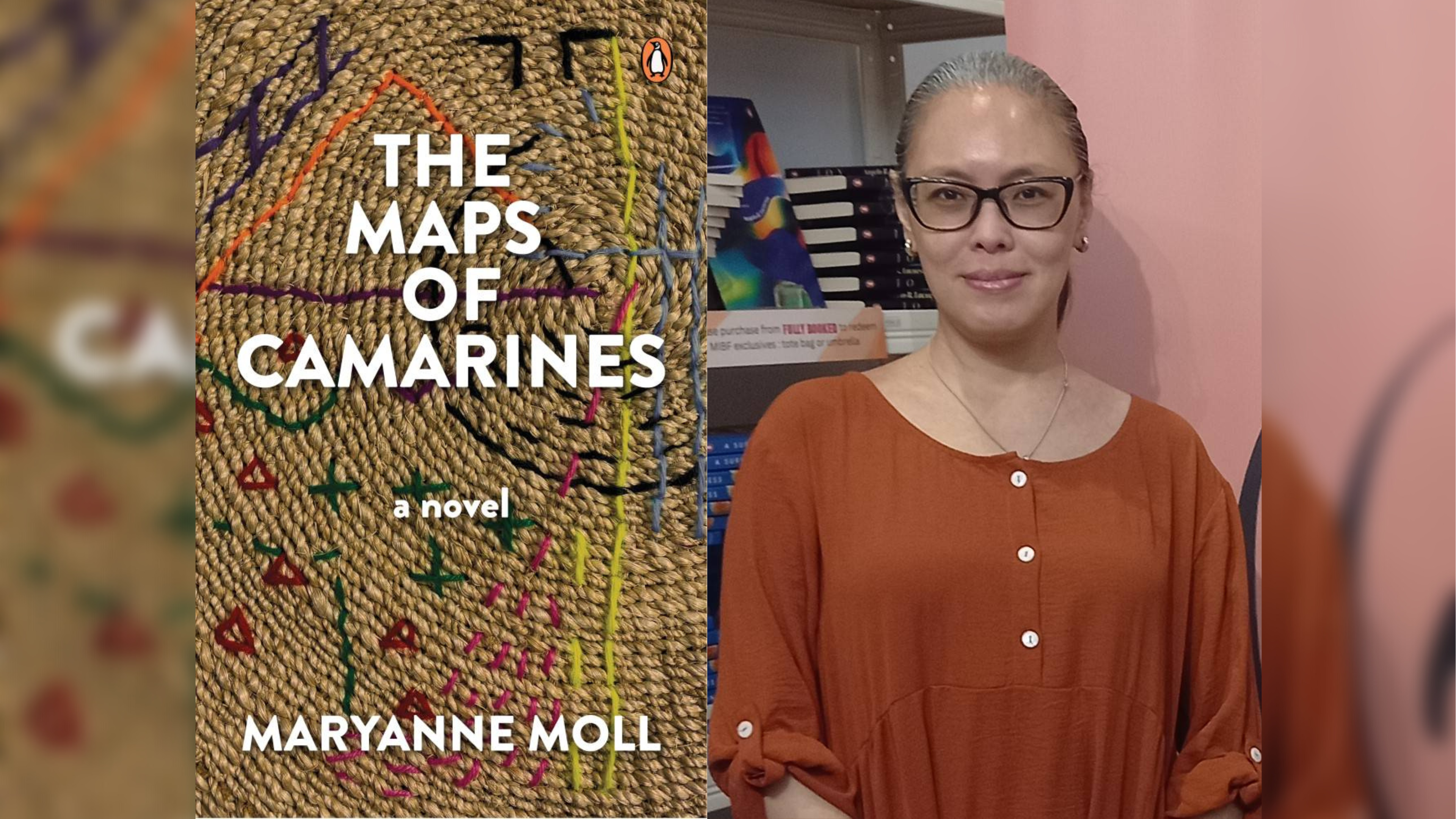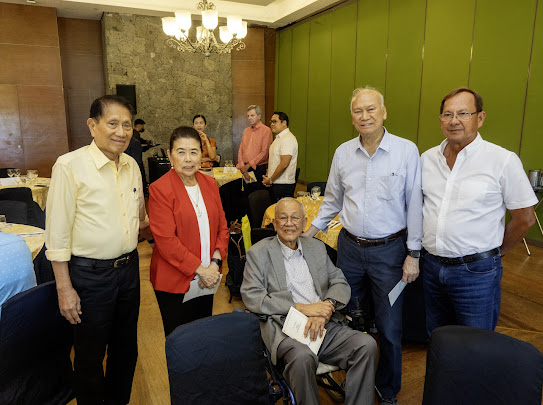READERS have seen their names on bylines, some for more than two decades, in their attempt to chronicle the story of the Filipino. And until today, these storytellers continue to create pieces that both encapsulate and withstand time.
But other than their articles and columns that regularly get published on the Inquirer, their works have been bounded in book spines. Often a collection of their prized articles, these do not only shed light on individual personalities, experiences and events, but also strongly reflect a part of their profession, and ultimately, themselves.
Pam Pastor
Pam Pastor has literally spent half of her life in the Inquirer newsroom.
In her 17 years as a journalist, she has met all kinds of crazy experiences—whether it’s being with Bear Grylls in the wild, being the newsroom’s Paris Hilton correspondent, checking in the most haunted hotel or having her selfie taken with John Green.
Her latest book, “Planet Panic,” remains to be a quick read that has a blog-like format where she recounts stories about her family, travels, coverages, random musings and just about any crazy adventure that she meets. Similar to her first book “Paper Cuts,” each of her short stories are a page-turner, making you anticipate if the next snippet of her life could get any crazier or funnier.

Not only that, her books are sure to activate the wanderlust in you as she shares stories of her trips abroad and her international celebrity run-ins, or make you crave for wings or cronuts when she describes how she cooks or chomps down these goodies.
She also dedicated a section on “Hospitals and Heartbreaks,” and although the author was obviously guarded in telling these stories and held back on giving out details, it was an evident break from her fun and spontaneous anecdotes.
Whether it’s the best meal you’ve had or your most awkward fan-girl moment, Pastor said that “Everyone has a story and everyone is a story.”
Vangie Baga-Reyes
When Sandy Prieto-Romualdez brought a copy of the Singapore Straits Times home, what caught her attention was an article on Singapore’s best cakes, which gave birth to the list-articles on desserts that Vangie Baga-Reyes had been writing since 2008.
According to Reyes, the first “Inquirer Lifestyle’s Best Desserts” was a compilation of “the best of the best” that were featured from 2008-2014. But what exactly does it take for a dessert to outdo all the others?
“Balance,” the certified sweet tooth shared. “Balance of the sweetness, richness—sometimes it’s just there. When you taste it, everything you’re looking for is just there.” She also said that the unique flavors should be evident and its ingredients should complement in taste and texture.
Both the “Best Desserts” books offer bite-sized descriptions that are so exquisite that one can already taste the textures and flavors in your mouth as you read them. Each page would make one wish that everyday had a sweet victory to celebrate with these best desserts.
“We put information about the bakers too because we want readers to know the people behind those desserts. These are real people, not just machines or mass production. These are from people who gave their sweat and blood to make these desserts, some are heirloom recipes and some of them are really just private bakers,” she shared.
Be prepared for a real sugar high as the sequel to the best-selling book features all new dessert discoveries that are sure to please and refresh any palate.
Young Blood
The opinion column of Young Blood is not only a platform for young people to share individual experiences or voice out thoughts and sentiments about current issues that loom the times. These stories capture the milieu, woes and triumphs of the time in the eyes of a young adult—a time capsule of the years they were written in.
And no matter how common some of the experiences on Young Blood may be—like stories of coming out, dealing with death, school or family troubles—these reach out not only to the current young generation, but, with all its wit and power, speak to every reader for them to understand the youth’s current stands, or perhaps, to remember what is was like to be in the same position.
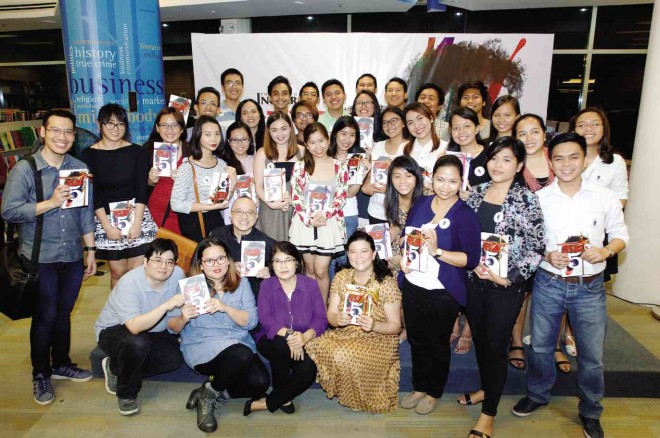
“Being young is being in a period when you are so attuned to everything around you that every little change triggers something in you. And that’s a period of both wonder and terror, and it’s very powerful,” Young Blood book editor Ruel De Vera shared.
“We look for that makes you, after all these years of young blood, still makes you want to read it even though it’s already two years past but it demands to be read. And every now and then, there is something that will whack you across the face and say ‘I’m here, this is a really good piece,’ and that’s all we look for,” he said.
Manix Abrera
“Kikomachine Komix” artist Manix Abrera recently released his newest comics collection “News Hardcore! Hukbong Sandatahan ng Kahaggardan” in Komikon last November.
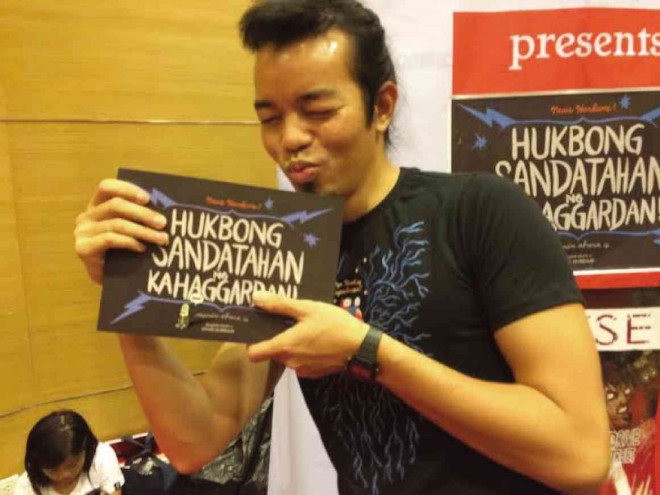
It has over 200 pages of strips that gives a glimpse on the daily grind of the newsroom and its reporters. Abrera’s comic strips are on-point with his use of media jargon, coverage scenarios, as well as unspoken journalism rants, that not only show the newsroom culture but also reveals humor that the public is not aware of.
I’m a Bagaholic
“Help! I’m a Bagaholic!” by Stefanie Cabal and Carmencita Sioson isn’t there to help tame the bagaholic in you. Instead the mini-book features iconic bag collectors, like Heart Evangelist and Maggie Wilson-Consunji included, who all talk about what they look for in bags and what makes luxury pieces worth buying.
It will also make you lust over classics like the Hermès Birkin, Chanel 2.55 and Louis Vuitton Speedy, as the history—who was it originally made for or who it was named after—of these timeless pieces are shared. Unique pieces of global brands include Stella McCartney, Yves Saint Laurent, Fendi, among many others.
Thelma Sioson San Juan
Thelma Sioson San Juan introduces today’s and yesteryear’s exemplary individuals—many of which are Filipinos who have conquered the global stage—to the readers in a magnanimity that feels as real as an actual encounter. Larded with uncommon details and anecdotes, her personality profiles enable readers to believe that they have been present in the majority of the trials and triumphs of these known people through her book, “I’m Afraid of Heights (Or Why I Can’t Social-Climb).”
Conversations that asked the right questions paired with details with more than enough flare, and observations—that most writers will remain oblivious to—of those she spend time with and interview, really encapsulate the moments she would like to share to the public.
Her stories almost account to a hundred people. From Kris Aquino being allowed to her first show biz stint in the 80s, to the start of Vicki Belo’s promising ascent in the industry, to Kenneth Cobonpue’s story long before he made those iconic Apec chairs seen and lauded early in November.
Tessa Prieto-Valdes
“Tessa: Ten Times Ten” can only get as colorful and whimsical as Tessa Prieto-Valdes herself. On the book’s pages was a compilation of a decade’s worth of columns, divided into 10 thematic chapters, which include Fashion, Fitness, Philanthropy, Family, among others, that are undoubtedly trademarks of her personality. Ten collaborators, who were also some of her closest friends and family members, also wrote essays that shared Tessa’s ceaselessly dynamic character and antics to begin the chapters.
But what challenged the grandeur of stories in the book—all the glitz and glamour of the snippets of parties, product launches, charity events, family gatherings, weddings—is the story of how, even to Tessa’s surprise, “Ten Times Ten” was able to reach bookshelves today.
Dennis Valdes, with the help of Sandy Prieto-Romualdez, for 18 months, silently waded through hundreds of articles and thousands of photos from the day Tessa had her first column published, and handpicked what was to be found on the book.
Ceres P. Doyo
Ma. Ceres P. Doyo, in her compilation of articles, essays and photos titled “Journalist in Her Country” and “Human Face” takes readers to different viewpoints and peaks of the country. Her narrative of adventures brings one to discover the beauty of local ingenuity and the threats to it.
Her courage takes readers out of the secured metropolis and into the lives of those settling in the regions or the outcasted, with a championed style of narrative journalism that enables readers to immensely feel fear, awe and the sensation of walking barefoot on uncharted lands.
Doyo has a fascination on stories of the rising and loss of home and folklore, but she also deals with the diversity of topics like politics, health, religion, and sometimes, communism. Her subjects are compelling—may it be about brothers, a death of a tribe leader or a hired assassin—containing still breathing moments that maintains a reader’s curiosity as they travel along her sentences.
Artemio Panganiban
Artemio Panganiban currently has 12 books published, his latest, which was published in 2012, houses his selected columns in “With Due Respect.” Here he continues his attempt to make the technical matters of the law understandable and interesting, benchmarking on the most pressing issues of the time, making readers understand grounds on which decisions have been made, exposing loopholes that can be used as arguments, as well as the effects of the implementation of laws and verdicts.
Randy David
Often used to introduce sociology to college students, Randy David’s “Nation, Self and Citizenship” and “Reflections on Sociology and the Philippine Society” explores the formation of the Filipino consciousness in the microlevel. It complies his essays and weekly column on the Philippine Daily Inquirer which tackle issues not only of the times but also, at a larger scope, the Filipino identity.
The books attempt to reconcile the experiences of the individual as a Filipino to society’s phenomena, to expound one’s realization on “nationhood and social responsibility.”
Conrado de Quiros
No one will dare disagree that Conrado de Quiros is one of the most articulate and influential political animals that this nation has witnessed (and, for some politicians, have had the displeasure of reading).
In his book “Tongues of Fire,” a collection of his public speeches and essays, although it unsurprisingly contains allusions of the administrations of Marcos to Arroyo, it takes a break from his columns that are
politically-heavy satires and commentaries, where he often stirs words of rage to arrive at his valid and insightful points. Here he divulges essays that are more personal, stating accounts that recall his days as an activist during Martial Law, or how he shut his friends down when they told him he was treading in dangerous waters writing about politics.
He has also written “Dead Aim: How Marcos Ambushed Philippine Democracy,” “Flowers From The Rubble,” and released last August was a biography titled “Honorary Woman: The Life of Raul S. Roco.”
Amando Doronila
Another affluent source of political insight, Amando Doronila dissects the events that lead to the ousting in Edsa II in “The Fall of Joseph Estrada: The Inside Story,” using published reports on the Inquirer and from the three narratives of former Executive Secretary Edgardo Angara, former AFP Chief of Staff Angelo Reyes and former Trade Secretary Jose Pardo.
He has also written “The State, Economic Transformation and Political Change in the Philippines.”
Queena Lee-Chua
Similar to her columns on the Learning and Business sections, Queena Lee-Chua’s books promote intellectual and fun learning and business venturing that debunk its infamous intimidating factors.
Here, she sheds light on parenting and school life, math and science subjects and managing family businesses.
Ambeth Ocampo
Ambeth Ocampo is a mainstay name on the spines of the history section of libraries in the country. He is widely known and read for his research on Rizal and the 19th century, particularly “Rizal Without the Overcoat,” “Makamisa: The Search For Rizal’s Third Novel,” “Luna’s Moustache,” “Mabini’s Ghost,” and “Bonifacio’s Bolo.”
He also has a “Looking Back” book series that is a mix of research and reflective essays that discuss prehistoric Philippines and the role of the country in Southeast Asian history, among others. It has a fusion of informative and humorous tone that establishes what is common in history, may it be geographically or in contrast of the present time.
John Nery
Inquirer.net Editor in Chief and “Newstand” columnist John Nery shares a fascination with the nation hero, Dr. Jose Rizal. His book, “Revolutionary Spirit: Jose Rizal in Southeast Asia” provides an in-depth context of the 19th century Southeast Asia to show how and why such environment was able to create individuals like Rizal, and how he awakened nationalism in the region.
Constantino Tejero
“The Book of Martyrs: Selected Poems 1892-1992” collects about a hundred of Constantino Tejero’s poems written in a span of a decade. It is divided into three sections: The Book of Songs, Prayers and Revolt, The Book of Curses and Exaltation, and The Book of Martyrs.
Some of his poems are reminiscent of headliners like the Aquino assassination, Marcos downfall and Mt. Pinatubo eruption that convey historical tensions as he makes art out of its rubbles.
Gilda Cordero-Fernando
In her short story collections “A Wilderness of Sweets” and “The Butcher, the Baker, the Candlestick Maker,” Gilda Cordero-Fernando’s tales were equipped with the power of descriptions that had unhurried elegance, infused with delicate nostalgia—that can also be cringingly graphic—as it recounts days during the Japanese occupation and Liberation in stories like “People of the War” or in the creation of characters who were muses of grace and mockery in “High Fashion.”
The multiawarded Fernando is also a publisher and editor of books that revolve around various Filipino roles and character in the essays found in “Being Filipino: Writings,” as well as musings and insights on the liturgical Lenten traditions and beliefs in “Cuaresma,” and the collection of “Filipino Myths & Folktakes: Treasury of Stories.”

